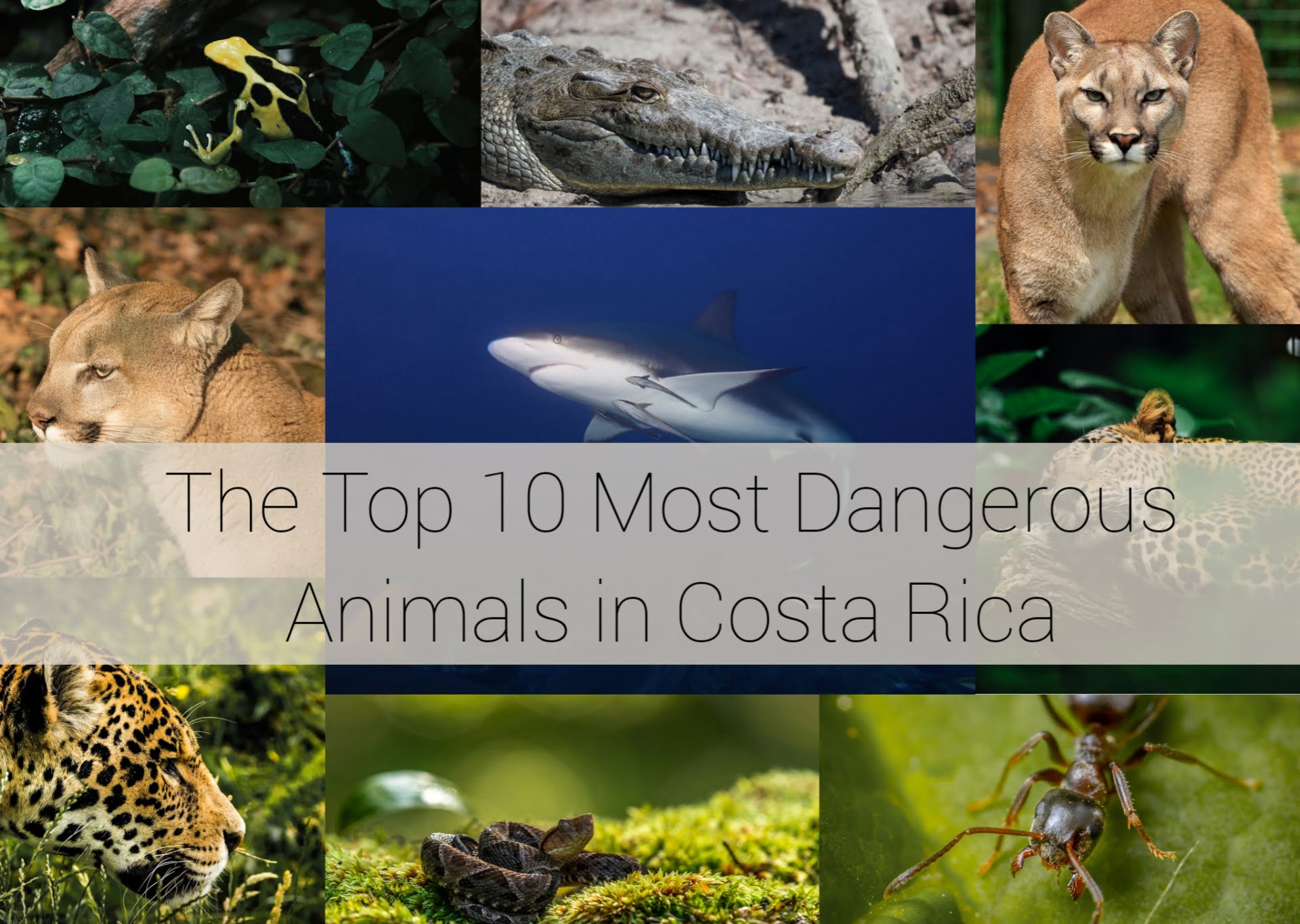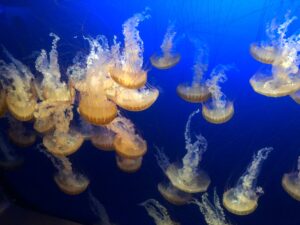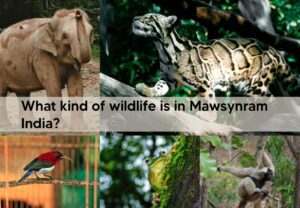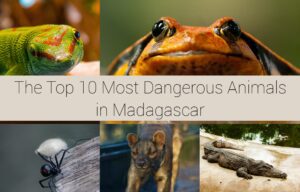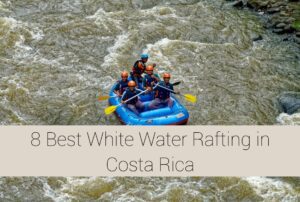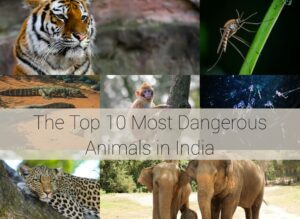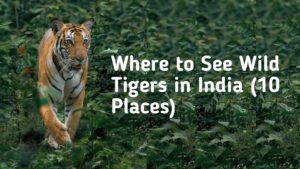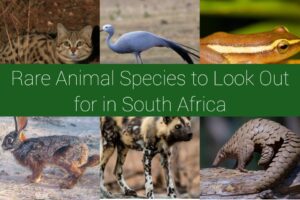Costa Rica is a Central American country that has many rainforests and waters where wildlife thrives. The country is a good pick for travelers who love nature and adventure.
Like many other countries with similar landscapes, Costa Rica is home to some of the most dangerous animals in the world. Some of these animals are venomous, aggressive, or deadly to humans.
In this article, we will look at the top 10 most dangerous animals in Costa Rica.
The Top 10 Most Dangerous Animals in Costa Rica
1. Fer-de-Lance Snake

Scientific name: Bothrops asper
Habitat: They live in areas with low or middle elevations. Can also thrive at much higher elevations, like the premontane forest in Costa Rica.
The first animal on our list is the fer-de-lance snake. This snake is a large, venomous pit viper that has earned the title of one of the most dangerous snakes in the world.
The Fer-de-Lance Snake is very fast and unpredictable, and their bite is deadly to both other animals and humans. You can identify this snake from its flat, triangular head and brown or gray body with dark diamond-shaped markings.
They can grow up to 2.5 meters long and weigh up to 6 kilograms. You will often find them near streams, ditches, and trails, where they hunt for small mammals and birds.
Since they are nocturnal animals, they are mostly active at night but can also be seen during the day. If you encounter one of these snakes, the best way to avoid them is to stay away from them.
Fer-de-Lance Snake venom can cause severe pain, swelling, bleeding, tissue damage, and even death if left untreated for a long period of time.
If you want to see the Fer-de-Lance Snake in Costa Rica, you can visit Corcovado National Park.
2. American Crocodile

Scientific name: Crocodylus acutus
Habitat: They live in mangrove swamps, rivers, fresh waters, and salt lakes.
The American crocodile is a large, powerful reptile that can reach up to 5 meters long and weigh up to 450 kilograms. This crocodile can look intimidating due to its row of sharp teeth that can crush hard materials.
They are mostly found in coastal areas, rivers, lakes, and estuaries, where they feed on fish, turtles, birds, and mammals. This crocodile can be territorial and aggressive during the breeding season, and they might attack humans.
The best way to avoid these creatures is to stay away from the waters in areas where they live.
To see American crocodiles in Costa Rica, you can visit Tarcoles, a small village in the Puntarenas province.
3. Jaguar

Scientific name: Panthera onca
Habitat: They are found in dense forests, flooded wetlands, and dry grassland.
Jaguars are large cats that are mostly native to the Americas. They can grow up to 1.8 meters long and weigh up to 120 kilograms.
Just like many other cats, Jaguars have a muscular body and a spotted coat that helps them camouflage in the forest.
Due to their predatory behavior, they can attack other wild animals, like crocodiles. This is possible due to their strong bite, which can pierce the skull and bones of their prey.

Luckily, these animals are solitary and prefer to avoid humans. But they can attack if they feel threatened or hungry.
If you encounter a jaguar, you should not run or turn your back, as this may trigger its chase instinct. You should stand tall and make yourself look bigger and louder. You should also back away slowly and calmly without making eye contact.
One of the places to find Jaguars in Costa Rica is Corcovado National Park.
4. Bull Shark

Scientific name: Carcharhinus leucas
Habitat: saltwater and freshwater
Bull sharks are aggressive shark species that are found worldwide in areas with warm and shallow waters. This large shark can grow up to 3.5 meters long and weigh up to 230 kilograms.
This shark also has a reputation as one of the most dangerous sharks in the world, as it can attack humans and other animals without provocation.
It is also known to swim up rivers and estuaries, where it can encounter unsuspecting people. Their bite is powerful and can inflict serious injuries and infections.
It is mostly found in coastal waters, but it can also be seen in lakes, rivers, and canals, where it feeds on fish, crustaceans, and mammals.
The best way to avoid these creatures is to never swim alone or at night.
5. Poison Dart Frog

Scientific name: Dendrobatidae
Habitat: they live in lowland forests, moist montanes, rivers, freshwater marshes, lakes, and swamps.
Another animal on this list is the poison dart frog. Just from its name, you can tell that this small and colorful frog is poisonous.
The skin of poison dart frogs contains a potent toxin that can paralyze or kill their predators. Some species of poison dart frogs are more toxic than others, and some can even kill a human with a single touch.

They are mostly found in humid and tropical forests, where they feed on insects and spiders. They are active during the day and use their colors to warn potential enemies.
If you encounter a poison dart frog, you should never touch it or pick it up. This is why it is always advisable to wear gloves and protective shoes when walking in the forest.
You will find poison dart frogs in the Monteverde Cloud Forest Reserve in Costa Rica.
6. Eyelash Viper
Scientific name: Bothriechis schlegelii
Habitat: they live in areas with lower altitudes, forests, plantations, and gardens.
The eyelash viper is a small, venomous snake that can grow up to 80 centimeters long and weigh up to 150 grams. It has the distinctive feature of having horn-like scales above its eyes, which resemble eyelashes.
They also have a variety of colors, like yellow, green, brown, or red. You will find them on trees in the forest, plantation, and garden, where they hunt for lizards, frogs, and birds.
Since they are nocturnal and secretive animals, they can camouflage well with their surroundings, which makes them harder to spot.
Their venom can cause severe pain, swelling, bleeding, and tissue damage. You will need immediate medical attention if you get bitten by an eyelash viper.
In Costa Rica, you will also find the eyelash viper in the Monteverde Cloud Forest Reserve.
7. Bullet Ant

Scientific name: Paraponera clavata
Habitat: lowland rainforests
The bullet ant is a large, black ant that can reach up to 3 centimeters long. They got their name from their painful sting, which is said to be as bad as being shot by a bullet.
It is also known as the 24-hour ant because the pain can last for a whole day. It is a social insect that lives in colonies of up to 10,000 individuals.
They are mostly found in lowland rainforests, where they build nests at the base of trees. Bullet ants feed on nectar, fruits, and small insects.
They will not fail to attack anything that disturbs their nest or colony. Their sting can cause symptoms like intense pain, inflammation, fever, and nausea.
8. Brazilian Wandering Spider
Scientific name: Phoneutria
Habitat: Forests
The Brazilian wandering spider is also known as an armed spider or banana spider. They are one of the most venomous spiders in the world and can cause serious health problems or even death.
They are large and hairy spiders that have a leg span of up to 15 centimeters. Brazilian wandering spiders do not build webs but wander around in search of prey.
You will mostly find them in tropical and subtropical forests, but they can also be seen in urban areas, where they hide in dark and moist places, such as shoes, clothes, or cars.
Their main sources of food are insects, rodents, and other spiders. Their venom can cause severe pain, swelling, sweating, nausea, and an irregular heartbeat. It can also cause priapism, which is a painful and prolonged erection that can lead to impotence.
9. Puma

The puma is a large cat that has a tawny or gray coat and a long, black-tipped tail. Other names include the cougar, the mountain lion, or the catamount.
These cats are native to the Americas and have a powerful bite that can kill larger animals like deer, elk, and llamas. They can also climb trees, jump high, and run fast, reaching 60 to 80 kilometers per hour.

The puma is a solitary and shy animal that prefers to avoid humans, but it can attack if it feels threatened or hungry. They are mostly found in mountainous and forested areas but can also adapt to different habitats, such as deserts, grasslands, and swamps.
You can find wild pumas in Corcovado National Park in Costa Rica.
10. Mosquito
Scientific name: Culicidae
Mosquitoes are small flying insects that can not only be a disturbance to humans but can also transmit diseases like malaria, dengue, yellow fever, Zika, and chikungunya.
They are one of the most annoying and dangerous animals you will find in Costa Rica. They are mostly found in warm and humid areas, where they breed in stagnant water.
Mosquitoes are active at dawn and dusk, but some species can bite at any time of the day. The best ways to fix the mosquito problem are to use repellent, wear long sleeves, and sleep under a mosquito net.
Conclusion
This wraps up the top 10 most dangerous animals in Costa Rica. We have provided a list of some of the most dangerous animals, what makes them dangerous, and where to find them in Costa Rica.
What do you think about these animals? Would you like to see them in Costa Rica? Let us know in the comments.
FAQs
What is the most dangerous animal in Costa Rica?
There is no definitive answer to this question, but I would say the most dangerous animal in Costa Rica is the Fer-de-Lance Snake, mainly because of its venom.
But other animals, like the American crocodile, the jaguar, the bull shark, and the poison dart frog, also pose different levels of threat and risk.
How can I avoid getting bitten by a snake in Costa Rica?
You can avoid getting bitten by a snake in Costa Rica by wearing boots and long clothes, avoiding walking in tall grass or leaf litter, using a flashlight at night, and watching where you step.
How can I prevent getting malaria or other mosquito-borne diseases in Costa Rica?
You can prevent getting malaria or other mosquito-borne diseases in Costa Rica by taking anti-malarial medication before, during, and after your trip, using repellent, wearing long sleeves, and sleeping under a mosquito net.
You should also consult your doctor before traveling and get vaccinated for yellow fever if required.
Are there any animals that are friendly and harmless in Costa Rica?
Yes, many animals are friendly and harmless in Costa Rica, such as sloths, monkeys, toucans, hummingbirds, butterflies, and sea turtles.
Are crocodiles dangerous in Costa Rica?
Costa Rica has a large population of crocodiles that live in rivers and protected wilderness areas and can be dangerous when disturbed.
Since they are hardly seen in human towns, they can only be dangerous when you invade their turf.

Hi, I’m Louis Ojibe, and I grew up around wildlife in Africa. I have always been fascinated by animals and nature across the world.
As a child, my parents used to take me to see wild animals like lions, elephants, gorillas, tortoises, and many others at our local zoo.

